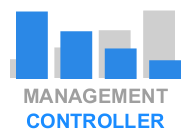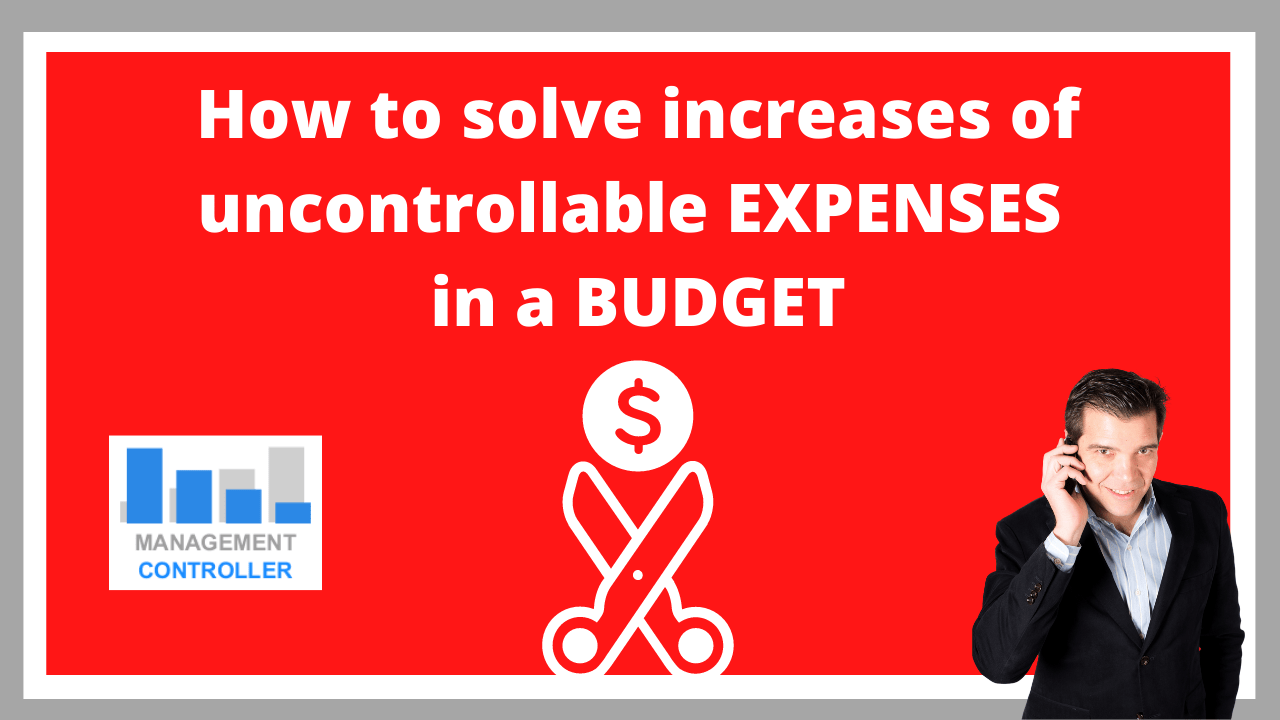How to solve increases of uncontrollable EXPENSES in a BUDGET.
What many companies do not know about a budget management and control system is that its real value does not only consist in analyzing the deviations generated by revenues and expenses with respect to the objective established at the beginning of the year (budget).
The true value is being able to control and anticipate each of the budget items or accounting accounts that make up the budget items or analytical accounts, depending on the denomination you want to use.
Normally we use accounting accounts to classify accounting entries generated by sales and purchases and various expenses related to the company’s activity.
Accounting works with historical data, that is, what has already happened is recorded.
If an economic transaction has already occurred, we cannot act on it.
We can use the information from the past, that is, the accounting entries, to make decisions about future accounting entries.
The problem is that if we do this, we do not know the impact that the decisions will have on the result at the end of the year, we will not know the result until the year is closed, and many times, depending on the accounting procedures, the closing can take several months, this is quite common in some countries.
We can make decisions about revenues and expenses that are controllable by the company, for example, we can increase sales prices without affecting demand, or change suppliers to cheaper one as they maintain the level of quality and service than before.
We can also identify expenses that do not add value to the company and make the decision to drop off or reduce them.
If, for example, we cannot raise prices because it would affect demand, we cannot directly control revenue, but we can increase the sales force or advertising spending and marketing actions to attract more customers.
Or we can reduce the sale price, reducing the unit gross margin of each product, encouraging the growth of demand.
These actions will have an impact on the benefits of the company. The question is what will be the impact, what will be the final result.
But there are a number of expenses or revenues that cannot be controlled.
When I explain to a company how a budget control system works, I always tell them that the result of the company will depend on 2 types of factors.
External factors, such as variation on the demand, the variation in the cost of raw materials or merchandise, the variation in energy costs, the variation in employee costs depending on current legislation, the variation in interest rates that affect financial expenses…
And the internal factors, such as the improvement of the internal processes of the company, the improvement of the organizational structure, the reduction or elimination of costs that do not add value to the company or the decisions on those expenses and revenues that the company can control.
Normally, external factors are those that are difficult to control, we have to assume them.
If demand falls due to an external factor, even if we lower sales prices, we may not be able to reactivate it and our total gross margin would be affected.
A significant increase in the cost of raw materials or merchandise directly affects the gross margin, as long as we cannot rebound on to the sales prices without affecting demand.
An increase in the cost of raw materials or merchandise and a reduction in demand is a combination that can lead many companies to a situation of chronic losses if actions and corrective measures are not taken.
And chronic losses imply treasury tensions, a high dependence on external financing or a total lack of liquidity, which over a long period of time can lead the company to bankruptcy.
If the company is intensive in energy dependence (manufacturing processes), an increase in energy cost will have an impact on indirect manufacturing costs, also reducing the gross margin of the products.
The gross margin is one of the most variable items that a company can have, so the final result will depend largely on this value.
The rest of the company’s structural expenses tend to have a more fixed behavior.
We can have employees with variable nature depending on the volume of the company, but many others will have a fixed behavior unless internal processes are improved and the same or more can be done with the same costs of employees with a structural nature.
But then there is another series of expenses that we can act on.
If, for example, we have high financial expenses, perhaps we should analyze the cause of their generation, controlling the treasury forecasts to make decisions about the need for high external financing that can be optimized and thus reduce this type of expense.
Perhaps we can dispense with certain types of superfluous expenses or those that do not add value but that represent a high percentage of the revenues level.
It is usual that companies depend completely on external factors and no internal measures are taken to mitigate their effects.
Companies can get an idea of the impact that these external factors can have on their accounts, but they do not have it contemplated in a system that allows obtaining an overview of the result depending on both external and internal factors.
If you do not have this global vision of what result the company is going to obtain at the end of the financial year, it will be difficult to make decisions or corrective measures to correct the negative impact of uncontrollable external factors.
So what is the solution to have that global vision that allows anticipating the result before the end of the year and we have time to act?
This is where the methodology of budget control systems comes in with the incorporation of projections in the accounting accounts or budget items.
If we are able to foresee or anticipate external factors such as a reduction in demand, an increase in the cost of raw materials or merchandise, the increase in energy costs….
We still have time to be able to make decisions about internal factors that minimize the negative impact of external factors.
The combination of forecasts of external factors and actions to be taken in internal factors will provide us with a vision of the final result that the company is going to have and therefore we already know what to expect and what to do.
Having an anticipated global vision is the key to the continuous improvement of companies and therefore their competitiveness.
This is what the large multinationals that work in an efficient and organized way do.
Why not apply the same methodology to smaller companies and not be an exclusive system for large multinationals?
If you are interested in this methodology and your company meets the appropriate requirements for a possible implementation, we can carry out a test with real data from your company, previously signing a confidentiality agreement, and if the system convinces you, we can start working continuously.
Many companies are already doing it and are obtaining important benefits as a result of this methodology.
Here there is more information about this innovative methodology applied to budget control systems.
More info about BUDGET CONTROL service
More info about BUDGET CONTROL methodology
Download a DEMO of the 2kM15 version Budget Control.
Download Budget Control Ytd FyFcst M15 Example of Budgetary Control Reports

J.A.T
This way of keeping a budget control changes everything. We had never tried it because we did not think it would be useful. But with Dani’s methodology we now see the potential and we think it will help us in very many ways.

R.M
The Budgetary Control technique and tool is helping us to better manage expenses and that allows us to make better decisions. A great contribution to our management control.
Contact for more information
ContactMore information about Controlling Excel Tools
- Home Budget M2 Excel Template
- Cost product BOM components example Excel spreadsheet
- Budget Control Excel YTD & FYForecast M15
- Real Estate Excel Templates
- Restaurants Sales forecast Free Excel Template
- The 5 Most Important Ways to Use Microsoft Excel at Work
- Best Finance Excel Templates for Controlling and Management
- Plan, Do, Check and Act (PDCA) Excel Template
- Employee Costs Allocation to Cost Centers Free Excel Template
- Multiproducts Breakeven Simulator Free Excel Template
- Balanced Scorecard M1 Excel Template
- Travel Expenses Control M1 Free Excel Template
- Actual Vs Budget Excel Templates
- Projects Work Plan Template Excel
- Budget Sales Control Free Excel Template
- How an Employee Suggestion Program can help improve company processes
- Budget Control Excel Year-to-Date & Full-Year Forecast M11
- KPI Sales and Commissions Control Excel Template
- Financial Plan M3 Free Excel Template
- Budget Control with SIMULATOR and Projections
- Employee Absences Free Excel Template
- Action Planning Free Excel Template
More Videos about Management Accounting

Industrial company financial manager
Dani is helping us to use ODOO more efficiently, we are rapidly leveling up with the ERP. It is also preparing us very useful analysis and control reports and outstanding management tools. Always available by phone or email, willing to help and collaborate in everything that is proposed. Very professional and fast work. A key service for our company.
Controlling Consultant
Controller ODOO ERP

Email: dani@cashtrainers.com


